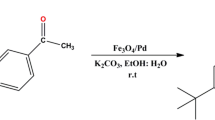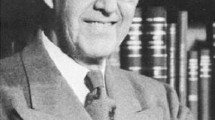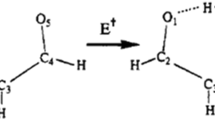Abstract
1,7,7-Trimethyl-2,6-dioxabicyclo[2.2.2]octan-3,5-dione is a dipseudoacyl ketal formed by a double intramolecular dehydration/cyclization of 2-carboxy-3,3-dimethyl-5-oxohexanoic acid. The compound is a volatile, colorless crystalline solid (mp 137 °C) which forms prisms and plates from ethanol by slow solvent evaporation. Crystals are orthorhombic, space group P212121 (#19), a = 8.0557(2) Å, b = 10.3545(3) Å, c = 10.7583(3) Å, V = 897.37(11)Å3 (101 K). The crystal and molecular structure has been determined on a single prismatic specimen at 280, 250, 200, 150 and 101 K (±1 K). The ostensibly rigid molecule possesses mirror symmetry, which is not retained in the solid state. Each six-membered ring has a boat conformation, with torsions-0.2°, 1.3°, −2.7° (101 K). Carbonyl groups are eclipsed with a common methine C–H bond, and the OCC(H) bond angles are enlarged to 126.9°, 127.0°, while the intraring CCO angles are contracted to 112.0, 112.1° (uncorrected for libration). The coefficients of thermal expansion are 3.34 × 10−4, 6.97 × 10−4 and 6.54 × 10−4Å/K for the three orthorhombic axes, respectively, over the range studied. A rigid-body librational model fit to the anisotropic librational parameters grows worse at lower temperatures, suggesting at least two lower frequency internal modes make contributions to the librational terms.
Graphical Abstract
A bicyclic rigid dipseudoacyl ketal shows libration which on analysis of the thermal motion from 280 to 101 K suggest two active low frequency vibrational modes.



Similar content being viewed by others
References
Sterk H (1968) Investigations on the temperature dependence of characteristic infrared frequencies. VII. Isomerism of levulinic acid derivatives. Monatsh Chem 99:1770–1773
Vorländer D, Gärtner S (1898) Annalen 304:16
Qudrat-I-Khuda M (1929) Keto-lactol tautomerism, Pt. I. Ring-chain tautomerism in α-carboxy-γ-acetyl, β, β-dimethyl- butyric acid and a synthesis of γ-acetyl β, β-dimethylbutyric acid. J Chem Soc 1929:201–209
Katayama C (1986) An analytical function for absorption correction. Acta Crystallogr A A42:19–23
Sheldrick GM (1986) SHELX-86, Program for crystal structure solution. University of Göttingen, Göttingen
Sheldrick GM (2008) A short history of SHELX. Acta Crystallogr A A64:112–122
Schomaker VS, Trueblood KN (1968) On the rigid-body motions of molecules in crystals. Acta Crystallogr A B24:63–76
Schomaker VS, Trueblood KN (1998) Description of THMA program for small molecules, which fits TLS parameters (and more) to refined U values. Acta Crystallogr A B54:507–514
Spartan (2008) Wavefunction Inc. Irvine, California
Kitaigorodskii, AI (1955) “Organic Chemical Crystallography”, tr. from Russian, Consultants Bureau, New York
Burgi H-B, Dunitz JD (1994) Structure Correlation, vol 2. VCH Publishers, Weinheim
Gatti C, Macchi P (2012) Modern charge density analysis. Springer, Dordrecht
Hirshfeld FL (1976) Can X-ray data distinguish bonding effects from vibrational smearing? Acta Crystallogr A A32:239–244
Trueblood KN (1978) Analysis of molecular motion with allowance for intramolecular torsion. Acta Crystallogr A A34:950–954
Acknowledgments
EJV acknowledges the National Science Foundation (MRI Grant 0604188) for support of crystallographic equipment.
Author information
Authors and Affiliations
Corresponding author
Ethics declarations
Conflict of interest
The authors declare that they have no conflict of interest in this work.
Rights and permissions
About this article
Cite this article
Duong, TV., Valente, E.J. Temperature-Dependent Crystal Structure Study of a Small Heterobicycle, C9H12O4 . J Chem Crystallogr 46, 290–295 (2016). https://doi.org/10.1007/s10870-016-0658-7
Received:
Accepted:
Published:
Issue Date:
DOI: https://doi.org/10.1007/s10870-016-0658-7




